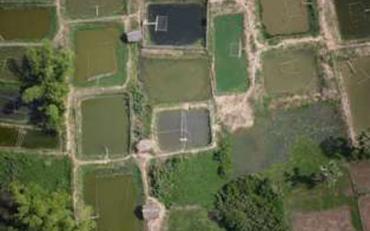About:
Freshwater resources are under increased pressure to satisfy the needs of water users throughout the world. Since 1800 the world’s population has increased from 1 to 7 billion, but freshwater is finite. The amount of freshwater on Earth does not change, yet water use went up ninefold in the 20th century. For many river basins and aquifers, however, because of pollution and overexploitation, availability and access to clean, safe water is declining.
With industrialisation and expanding irrigated agriculture, combined with climate change, water security is under threat. By 2025, 1 800 million people will be living in countries or regions with absolute water scarcity, and two-thirds of the world population could be under stress conditions. The following overallocation and degradation of water resources cause loss of biodiversity and ecosystem services. That's why it is crucial to ensure the management of water resources that will support the sustainable development of the region and benefit both nature and people.
Integrated Water Resources Management (IWRM) is designed to provide solutions. Practical strategies for implementing IWRM have been shown to work. These work best when they address the needs of nature in combination with social and economic development and require changes from the traditional ‘top-down’ water management. Practical strategies overcome lack of coordination among sectors and disjointed planning that can otherwise easily result in unnecessary expenditure and large infrastructure that fails to provide expected results, at the expense of natural ecosystems.
IWRM is designed to replace fragmented management of water and encourage its sustainable use. Planning for IWRM takes place using inclusive, participatory processes. The big challenge is to implement these practices. The IUCN Global Water Programme showed that implementing IWRM is made practical through the explicit strategies to demonstrate what works, how to deliver results on the ground and learning-by-doing. Real progress is built by combining demonstration and learning with empowerment of communities, and actions that support and catalyse national and basin-level water reforms with financing and investment that can be sustained.
IWRM demonstrations use learning-by-doing to innovate and adapt water resources management actions, tools and technologies. Concrete results and lessons learned are fed back, to build confidence and anchor basin and national policies and planning in knowledge of what works. Coalitions of beneficiaries, water advocates and leaders join forces within political realities to catalyze change in institutions that enable practical implementation of IWRM plans.
IUCN recommendations:
- Complement Planning With River Basin Demonstration Projects: planning should not be done in isolation from practical action and learning. Develop and fund a set of river basin/watershed demonstration projects that put IWRM principles into action. Work adaptively to deliver results on the ground and use the lessons to improve policies and plans.
- Communicate Evidence on What Works: There is no IWRM prescription. Work with stakeholders to adapt IWRM principles to on-the-ground and institutional realities through demonstration projects that are flexible and adapt and innovate as they proceed. Embed learning strategies in demonstrations to capture evidence of what works. Communicate and share lessons in ways that catalyze action at local, national and basin levels.
- Put in Place Good Water Governance: Implementing IWRM requires water governance that is coordinated across levels and promotes and facilitates consensus building. Create platforms for stakeholders to come together to transparently agree and define rights and responsibilities. Ensure that institutions are accountable to their commitments, while decision-making incorporates the realities of political processes.
- Finance Water Resource Management Sustainably: Financing IWRM implementation must be sustainable. Use evidence of costs and benefits, including for livelihoods, economic development and the direct and indirect benefits from ecosystem services, to justify and mobilise investments in IWRM. Develop incentives that reward those managing watersheds sustainability
Achievements:
Western Africa
In Nigeria’s Komadugu-Yobe River Basin, upstream of Lake Chad, dam construction and irrigation caused falling river levels, impacting livelihoods and leading to conflict. Governments and civil society agreed on a Water Charter for the Basin. Farmers, fishermen and herders joined in negotiation of plans to restore the river. Practical demonstrations helped restore the river’s flow locally, allowing communities to improve livelihoods and reduce conflict. Trust gained from practical measures has led to authorities now investing in a Trust Fund for sustainable management and restoration of the Basin.
South America
Communities vulnerable to floods and droughts in El Imposible Basin, El Salvador, suffered ill-health because of poor water quality. Working together, river basin committees used IWRM to improve water quality and access. Livelihoods projects provided tangible benefits on the short term and results have been integrated into a national process for strengthening basin organizations in El Salvador.
